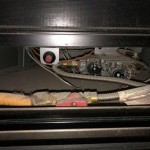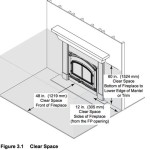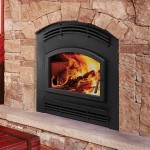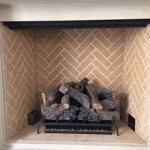See-Thru Outdoor Wood Burning Fireplaces: Aesthetics and Functionality
See-thru outdoor wood burning fireplaces, also known as double-sided fireplaces, offer a unique and visually striking addition to outdoor living spaces. Unlike traditional fireplaces that focus heat and ambiance in one direction, see-thru models allow flames to be viewed from two separate areas, effectively connecting and enhancing different zones within a patio, deck, or garden setting. This design choice provides both aesthetic appeal and functional benefits, contributing to a more versatile and inviting outdoor environment.
The selection and installation of a see-thru outdoor fireplace require careful consideration of factors such as fireplace type, fuel source, material, installation requirements, safety regulations, and local building codes. Understanding these aspects is crucial to ensuring a successful and enjoyable addition to an outdoor space.
Key Point 1: Design and Aesthetic Considerations
The primary appeal of a see-thru outdoor fireplace lies in its design flexibility and aesthetic enhancement. These fireplaces are available in a range of styles, from rustic and traditional to sleek and modern, allowing homeowners to choose a model that complements the overall design of their outdoor space. The ability to see the flames from two sides creates a focal point that can visually connect two distinct areas. For example, a see-thru fireplace could bridge a covered patio seating area and an open-air dining space, unifying the two zones while providing warmth and ambiance to both.
Material choices play a significant role in the aesthetic impact. Common materials include brick, stone, stucco, concrete, and metal. Brick and stone offer a classic, enduring look, while stucco provides a smooth, contemporary feel. Concrete can be molded into various shapes, allowing for custom designs, and metal, often stainless steel or powder-coated steel, presents a modern and industrial aesthetic. The selection of materials should harmonize with the existing architectural elements and landscaping of the outdoor area.
Beyond materials, the design can be further customized with features such as mantels, hearths, and decorative accents. Mantels provide a surface for displaying objects and can be crafted from wood, stone, or metal. Hearths, typically made of non-combustible materials, protect the surrounding area from sparks and embers. The shape and size of the firebox also contribute to the overall aesthetic. Some models feature traditional rectangular fireboxes, while others offer unique shapes like circular or square designs.
The visual impact of the flames themselves should be considered. The height and width of the firebox, as well as the design of the fire grate, influence the appearance of the fire. Some fireplaces are designed to create a tall, dramatic flame, while others produce a broader, more subdued fire. Furthermore, the addition of fire glass or decorative logs can enhance the visual appeal and add a touch of personalization.
Placement is crucial. Careful attention should be paid to the prevailing wind direction to minimize smoke exposure to seating areas. The fireplace should be positioned to maximize viewing angles from both sides, ensuring that the flames are readily visible and enjoyable from multiple locations within the outdoor space. Considerations should also be given to landscape elements such as trees and shrubs, avoiding obstructions and ensuring adequate clearance for safe operation.
Key Point 2: Functional Benefits and Practical Considerations
Beyond aesthetics, see-thru outdoor fireplaces offer several functional benefits. Their primary function is to provide warmth and extend the usability of outdoor spaces during cooler months. The ability to direct heat to two separate areas makes them particularly useful for larger patios or decks where a single-sided fireplace might not provide sufficient warmth.
The design of a see-thru fireplace often incorporates features that enhance its efficiency and ease of use. Many models include adjustable dampers that allow control over the airflow, influencing the intensity of the fire and the amount of heat produced. Some fireplaces also feature built-in ash pans, simplifying the process of cleaning and maintenance.
Drafting is a critical aspect of fireplace functionality. Proper drafting ensures that smoke is efficiently drawn up the chimney and away from the surrounding area. Factors that can affect drafting include chimney height, flue size, and wind conditions. Professional installation is essential to ensure that the fireplace is properly sized and installed to optimize drafting performance.
Fuel efficiency is a growing concern for many homeowners. While wood-burning fireplaces are not inherently the most efficient heating option, certain design features can help to improve their performance. These include insulated fireboxes, which help to retain heat, and tight-fitting doors that prevent air leakage. Using seasoned firewood is also crucial for maximizing heat output and minimizing smoke production. Seasoned wood burns more cleanly and efficiently than green wood, producing more heat and less creosote buildup in the chimney.
Long-term maintenance is an important consideration. Regular cleaning of the firebox and chimney is necessary to prevent creosote buildup, which can pose a fire hazard. The frequency of cleaning will depend on the amount of use and the type of wood burned. A professional chimney sweep can perform a thorough inspection and cleaning, ensuring that the fireplace is operating safely and efficiently. Regular inspection of the firebox, chimney, and other components is also recommended to identify and address any potential problems before they escalate.
Key Point 3: Safety, Regulations, and Installation
Safety is paramount when installing and operating any type of fireplace, and see-thru outdoor models are no exception. Adherence to local building codes and regulations is essential to ensure that the fireplace is installed safely and legally. These codes typically address issues such as clearances from combustible materials, chimney height requirements, and fire prevention measures.
Clearance from combustible materials is a critical safety consideration. The fireplace must be installed at a safe distance from any flammable materials, such as wood framing, siding, and roofing. The specific clearance requirements will vary depending on the type of fireplace and the materials used in its construction. Local building codes will specify the minimum clearance distances that must be maintained.
Chimney height is another important factor. The chimney must be tall enough to ensure proper drafting and prevent smoke from blowing back into the surrounding area. The specific height requirements will depend on factors such as the height of nearby structures and the prevailing wind conditions. Building codes will typically specify the minimum chimney height based on these factors.
Installation should be handled by qualified professionals. Improper installation can lead to safety hazards, such as fire risks and carbon monoxide poisoning. A professional installer will have the knowledge and experience to ensure that the fireplace is installed correctly and in accordance with all applicable codes and regulations. They can also advise on factors such as proper venting, chimney construction, and fire prevention measures.
Operating the fireplace safely requires following certain guidelines. Never leave a fire unattended, and always ensure that the fire is completely extinguished before leaving the area. Use a fire screen to prevent sparks and embers from escaping the firebox. Keep flammable materials away from the fireplace, and never store wood or other combustibles near the fire. Regular inspection of the fireplace and chimney is essential to identify and address any potential problems. Have the chimney professionally inspected and cleaned at least once a year, or more frequently if the fireplace is used extensively.
Insurance considerations are also important. Homeowners should inform their insurance company about the installation of a see-thru outdoor fireplace and ensure that their policy provides adequate coverage in the event of a fire or other damage. They should inquire about any specific requirements or restrictions related to outdoor fireplaces and take steps to comply with those requirements.

Majestic 42 See Thru Radiant Wood Burning Fireplace Chadwicks S

Outdoor Fireplaces Fire Pits In Calgary Hearth Home

Napoleon Galaxy Outdoor Linear See Thru Gas Fireplace 48 Woodland Direct

36 Fortress Indoor Outdoor Intellifire See Thru Direct Vent Fireplace Electronic Ignition Monessen

Outdoor Linear 48 Fireplace With Crushed Glass And Led Interior Lights Vre4600 Vre4648 F4834

Majestic See Through Fireplaces Indoor Outdoor

Montigo Divine 38 See Thru Vent Free Outdoor Gas Fireplace H38sv North Country Fire

Majestic Lanai 48 See Thru Linear Outdoor Gas Fireplace Odlanaigst North Country Fire

Napoleon Gss48ste Galaxy 48 See Thru Outdoor Gas Fireplace

Town Country Ws54 Indoor Outdoor See Thru Fireplace Vancouver Gas Fireplaces








